Beyond Readers and Folktales: Observations About Singapore Children’s Literature
Singapore children’s literature has an important role to play within the larger context of children’s literature. Stories that portray Singapore children with their worldview, realities and values capture the identity of the Singapore child and reflect how they redefine themselves in the face of different cultural realities.
Multicultural Children’s Literature
The study of multicultural children’s literature has been making significant inroads into the domain of children’s literature. However what constitutes multicultural literature? According to Higgins (2002), the term “multicultural” is used to describe “groups of people from a nonwhite background, people of color, or people of all cultures regardless of race”. In the context of this definition, a study of Singapore children’s literature would definitely fall within the realm of multicultural literature.
One may ask, why is there a need to study multicultural children’s literature or Singapore children’s literature in the first place? Hazel Rochman (1993) succinctly explains that multicultural literature “can help to break down [barriers]. Books can make a difference in dispelling prejudice and building community”. More importantly, “a good story lets you know people as individuals in all their particularity and conflict” (Rochman, 1993). For Singapore, an awareness of multicultural children’s literature would help to throw light upon the different realities in a pluralistic society like ours, where “learning how people from other cultures do similar things in different ways can help children gain a sense of acceptance and appreciation for diverse cultures” (Hillard, 1995).
There are two ways of looking at this. Firstly, through exposure to multicultural literature, children would gain a better understanding of themselves as they “identify with characters that look like them” and they would then be able to “participate in shared cultural traditions and daily experiences” (Pataray-Ching & Ching, 2001). Secondly, the existence of multicultural literature would have an empowering effect as it is written evidence of the contributions made by those not belonging to the mainstream white culture that is highly prevalent in the publishing industry.
Singapore Children’s Literature
In the light of this, Singapore children’s literature has an important role to play within the larger context of children’s literature because it would ideally represent the authentic voice of the Singapore child. These stories that portray Singapore children with their worldview, realities and values, would capture the identity of the Singapore child and how they redefine themselves in the face of different cultural realities.
Our observations of Singapore children’s literature has, however, shown that more often than not, these larger issues are sidelined by the more basic issues such as authors getting their works published in the first place. Many children’s authors in Singapore face the daunting challenge of self-publishing their works because local publishers, due to economic constraints, often overlook these works in favour of more lucrative materials. This is unfortunate as selfpublished books are sometimes put under scrutiny and suffer from a lack of credibility.
This lack of publisher support has existed for a long time. One resason for this is the utilitarian attitude towards reading and literature in Singapore, exacerbated by the fact that “literature in Singapore is not recognised as a source of vital, vigorous and possible change-bringing elements but as a simple auxiliary of life” (Tay, 1984).
Given this, it is not surprising that the children’s publishing scene in Singapore has suffered with its children’s literature comprising mainly supplementary readers short stories and folktales, and very few original works of quality and merit.
A Short History of Singapore Children’s Literature
A rigorous observation of the Singapore children’s literature scene reveals five distinctive categories of books – “the supplementary reader, the picture book, the folktale, the moralizing idyll, and the creative fictional text” (Tay, 1995).
The colonial period of the 1950s and 1960s saw the blooming of children’s literature in Singapore authored by foreigners. One particular book published in Singapore in 1965 is the Street of the Small Night Market by British children’s author Sylvia Sherry. It is an absorbing tale of Ah Ong’s struggle to survive in a menacing Chinatown.
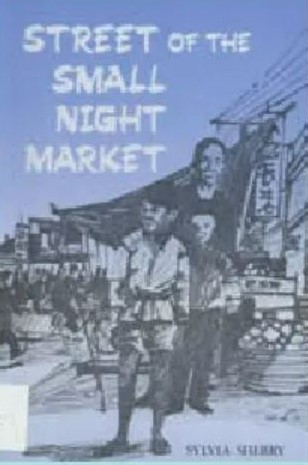
In the 1970s, literature for children was skewed chiefly towards language acquisition. We could say it was the start of the “all for education” mentality of the parents, many of whom “tend(ed) to measure the worth of reading according to its usefulness in schoolwork and in the attainment of better grades” (Tay, 1995).
Literature was not employed as a heuristic mechanism for discovery and learning but as a didactic means of language instruction, used to inculcate desirable behavioural outcomes. One such book is Courtesy is John’s Way of Life (1979).
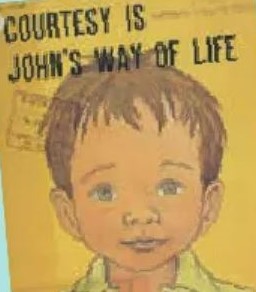
In Courtesy is John’s Way of Life (1979), the subject matter relates to the courtesy campaign that ran in the 1970s. The protagonist, John displays courteous behaviour at all times – in school, at home and with his friends. An unbelievable character indeed – nevertheless, it worked for the campaign.
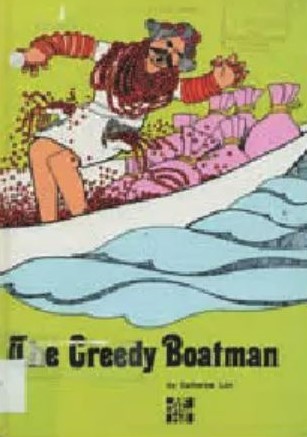
In The Greedy Boatman (Catherine Lim, 1979), we have the moralising idyll. The folktale, which relates the story of a greedy boatman who seizes an unfortunate event to get rich and learns a lesson the hard way, is another example of a book used to encourage good behaviour.
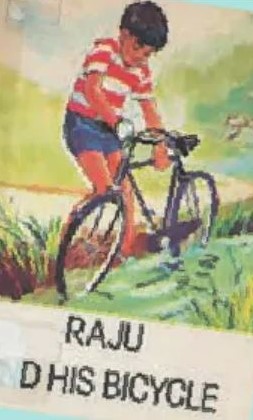
Coming under this category of didactic texts are picture books such as Raju and his Bicycle (1978). The simple prose and illustrations were meant to serve the language needs of the reader who was new to English. In addition, popular folktales such as the Moongate series by Chia Hearn Chek were written to transmit a sense of history and culture to the younger population. The Raja’s Crown: A Singapore Folktale (1975) is one fine example in the series.
Although “useful” reading materials continued to be published, children’s books produced in the 1980s and 1990s did improve in content and presentation. Writing took on a contemporary edge and the publishing output improved as more writers and illustrators – both Singaporeans and foreigners – entered the scene. It could be said that the 1980s saw the advent of creative fictional writing.
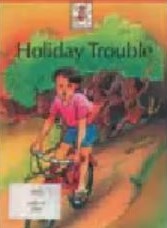
Illustrations, however, have always been a distressing feature of locally produced books. For instance, the illustrations in the books discussed above (Courtesy is John’s Way of Life and The Greedy Boatman) contain visuals that are dull, static and unimaginative. Because the literary scene for children in Singapore grew more out of a need for literacy rather than sheer creativity, the illustrations were uninspired. Bessie Chua’s Holiday Trouble (1990), for example, traces the adventures of young Abdul and Aini in the kampung days. Written for older children, the book was aimed at improving their language proficiency and not to develop an appreciation of art.

However it is not all bleak. Remarkable works, such as Jessie Wee’s Home in the Sky (1989), can be found. In this book, Jessie Wee tells a heartwarming story of Ho Seng and his friends who move into their “home in the sky” – the charming high-rise Housing Development Board (HDB) flats that are home to many in Singapore. The story explores the transition from simple kampung living to high-rise living. While the writing retains a Singapore flavour, the book has an international appeal with the illustrations showing maturity and an understanding for details.
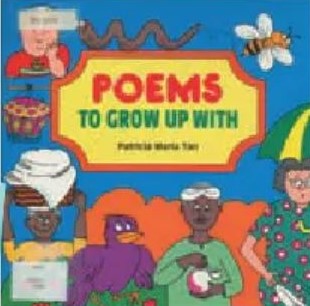
In Poems to Grow Up With (1989) by Patricia Tan, the illustrations are localised to reflect the local characters like the kachang puteh man. Tan’s works are suited for a range of readers – adult, young people and children. Some of published stories for children include Spot and I (1982), Raman’s Present (1983) and Huiming Visits the Zoo (1984).
The published materials around this time continued to develop the Singaporean flavour of story and structure. In Kelly Chopard’s Meow: A Singapura Tale (1991), two Singapura cats, Petta and Larikins, escape from a cat show held at the Padang, and run into Kuching, a street cat at the Singapore River. Kuching lovingly relates the tale of Meow, the great-greatgrandfather of the Singapura cats, whose heroism saved the life of his friend, Ah Kow a labourer. Chopard continued writing stories with Singapore’s history and heritage in her two other books – Terry’s Raffles Adventure (1996) and The Tiger’s Tale (1987).
Into the Future
Beyond the supplementary readers, picture books, folktales, moralistic tales and creative texts, what else does Singapore children’s literature have to offer? And where does this leave the reader – child or adult?
The Singapore reader, one would say, is left in a vacuum, which thus accounts for the popularity of the Harry Potter series, the Lemony Snicket series, the Hardy Boys and Nancy Drew series, and of authors like Roald Dahl. In all fairness, though, the local Mr Midnight series has been extremely popular with Singapore children as has been many Singapore ghost stories but these do not necessarily fall within the realm of quality children’s literature due to their formulaic plots and prosaic writing style.
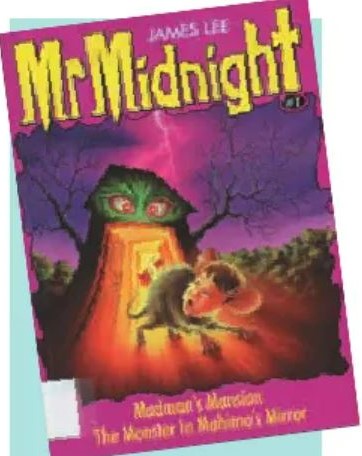
Ironically, Singapore children’s literature scene is slowly evolving as an increasing number of expatriate writers enters the local writing scene, such as James Lee, Quirk A, Di Taylor and Joy Cowley.
It is hoped that with a global outlook, the publishing scene in Singapore will improve, but given the existing climate, children’s authors, illustrators and publishers in Singapore will have to strive hard for “the development of a locally authored literature… for such a literature can play a cardinal role in the perpetuation of indigenous cultural memories and heritages” (Lee, 1990/91). If the issue is ignored, Singapore’s society will lose a lot and “unless we create our own internal strength, have a sense of our own permanence and identity, we shall be little more that an half-way house for the rest of the world, a clearing house for cultures that come in and go out from us” (Lee, 1990/91). That permanence and identity can be created when we have our own Singapore children’s literature which children here can identify with and be proud of.
As Patary-Ching and Ching (2001) pointed out, we need “a multicultural library of children’s books” which acts as “an enabling museum of living culture through which children may travel and remember”.
The Lee Kong Chian Reference Library’s Asian Children’s Collection is a unique collection of 20,000 children’s titles. This collection is a gem as it comprises an extensive array of Singapore children’s literature. At the same time, it collects Asian children’s literature spanning the Asian region and beyond, including works on Asian diaspora.
Senior Reference Librarian
Lee Kong Chian Reference Library
 Panna Kantilal
Panna KantilalSenior Librarian
Professional Services

